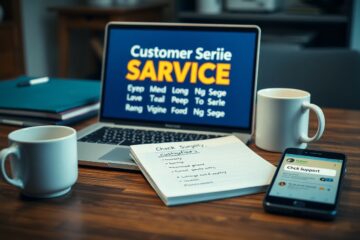AI is reshaping how startups and small businesses operate, giving you access to automation, data-driven insights, and scalable workflows that level the playing field. This concise guide presents the top 10 AI tools you should consider to streamline operations, accelerate growth, and optimize costs, with practical criteria to evaluate fit, ease of implementation, and ROI so you can choose the right solutions for your needs.

Key Takeaways:
- Selection-focused: The article prioritizes tools for startups and small businesses based on cost, ease of deployment, integration, scalability, and measurable ROI so readers can match tools to their stage and budget.
- Comprehensive coverage: It lists ten AI tools across categories—productivity, marketing, customer support, analytics, and operations—providing an overview, key features, practical use cases, and adoption tips for each.
- Actionable implementation guidance: Includes vendor-evaluation checklists, security and data-privacy considerations, onboarding steps, and metrics to track performance and adoption.

10 Must-Have AI Tools for Startups & Small Businesses
Tool #1 – Chatbot Solutions
You can deploy AI chatbots to handle common customer queries, qualify leads, and provide 24/7 support without adding headcount. Modern solutions let you customize flows, escalate to humans when needed, and integrate with your CRM so conversations become actionable data.
When you use chatbots, you reduce response time and free your team to focus on higher-value tasks while maintaining consistent service. Choose platforms that support multilingual responses, analytics on intent, and easy training with your existing knowledge base.
Tool #2 – Automated Marketing Platforms
You should use AI-powered marketing automation to build personalized customer journeys, automate email and ad campaigns, and optimize spend across channels. These tools use segmentation, predictive scoring, and content personalization to increase engagement and conversion without manual micromanagement.
AI automation helps you A/B test creatives and subject lines at scale, pick optimal send times, and allocate budget dynamically based on predicted performance. Look for platforms that integrate with your e-commerce, CRM, and analytics stack so your campaigns are data-driven end-to-end.
More info: prioritize platforms that offer unified customer profiles, predictive lifetime value models, and workflow builders you can edit without engineering support, so you can iterate campaigns quickly and measure ROI transparently.
Tool #3 – Predictive Analytics Software
You can leverage predictive analytics to forecast demand, identify churn risk, and optimize inventory and pricing decisions. These tools apply machine learning to your historical data to surface trends and probabilistic outcomes that inform strategic choices.
With predictive models, you gain forward-looking insights that let you shift from reactive to proactive operations—improving retention, reducing stockouts, and prioritizing high-value customers for interventions.
More info: focus on solutions that provide explainable models, easy-to-use dashboards, and connectors for your sales, product, and finance systems so you can validate predictions and act on them quickly.
Tool #4 – Customer Relationship Management
You should adopt AI-enhanced CRM to automate data entry, score leads, and recommend next-best-actions for sales and support teams. AI features help you prioritize outreach, personalize messaging, and close more deals with less manual forecasting.
Integrating AI into your CRM streamlines pipeline management and gives you insights into customer health and revenue opportunities without extra reporting overhead.
More info: choose CRMs with built-in AI for lead scoring, opportunity forecasting, and automated activity capture, plus open APIs so you can connect your marketing and support tools for a single customer view.
Tool #5 – Content Creation Tools
You can accelerate content production with AI tools that generate drafts for blogs, product descriptions, ad copy, images, and short videos. These tools save time while keeping output consistent with your brand voice when you provide clear prompts and style guidelines.
Use content AI to scale ideation, repurpose assets, and produce variants for A/B testing, but maintain human review to ensure accuracy, compliance, and brand alignment.
More info: invest in tools that include SEO optimization, plagiarism checks, and collaborative editing so your team can refine AI drafts into high-performing assets for multiple channels.
Tool #6 – Accounting Automation Software
You should automate bookkeeping tasks like invoice processing, expense categorization, and bank reconciliation with AI to reduce errors and speed month-end close. These platforms use document OCR and pattern recognition to extract and classify financial data.
AI-driven accounting frees your finance team to focus on cash management and strategic analysis while maintaining audit trails and regulatory compliance.
More info: prioritize solutions that integrate with your bank feeds, payroll, and ERP systems, offer multi-currency support, and provide cash-flow forecasting to help you plan runway and working capital.
Tool #7 – Project Management Assistants
You can deploy AI project assistants to auto-generate timelines, predict delivery risks, and summarize meetings and status updates. These tools reduce administrative load and surface bottlenecks before they become blockers.
AI in project management helps you allocate resources more effectively, estimate realistic deadlines, and keep stakeholders aligned with automated progress reports.
More info: look for assistants that integrate with task trackers, calendars, and communication platforms so your team benefits from automated scheduling, dependency detection, and concise briefs without switching apps.
Tool #8 – Social Media Analytics
You should use AI-driven social analytics to track sentiment, identify trending topics, and measure campaign impact across platforms. These tools help you optimize content strategy, detect brand risks, and discover new audience segments.
AI enables you to prioritize channels and content types that drive engagement and attribution, and to benchmark performance against competitors with minimal manual effort.
More info: select analytics platforms that offer real-time monitoring, influencer identification, and cross-channel dashboards so you can translate social signals into actionable marketing and product decisions.
Tool #9 – Email Automation Tools
You should use AI-powered email automation to scale personalized outreach, onboard new users, and nurture leads without losing relevance. These tools generate subject lines and body copy optimized for engagement, personalize content based on user behavior and profile data, and automatically sequence messages across lifecycle stages so your team can focus on high-value interactions instead of repetitive sends.
Key capabilities to look for include AI subject-line and content generation, real-time segmenting and dynamic content, send-time and frequency optimization, multi-step workflow builders with A/B testing, deliverability monitoring and spam-score checks, CRM and analytics integrations for revenue attribution, and privacy/compliance controls to protect customer data. Choose a solution that integrates with your stack, surfaces explainable recommendations, and lets you pilot automated flows on a subset of traffic before full rollout.
Tool #10 – Cybersecurity Solutions
You should adopt AI-enhanced cybersecurity tools to detect threats faster and reduce manual triage. Look for solutions that combine behavioral analytics, anomaly detection, and automated incident response so suspicious activity is flagged and contained before it impacts your operations. Endpoint detection and response (EDR), cloud workload protection, and phishing-detection modules powered by machine learning will cover the most common attack vectors against startups and small businesses.
Prioritize tools that offer clear integration with your SIEM or logging stack, low false-positive rates, explainable alerts you can act on, and prioritized patching or remediation playbooks. Start with visibility on your highest-value assets, run a limited deployment to validate detections, and scale protections as you refine rules and workflows to fit your risk profile and resource capacity.
To wrap up
Conclusively, the 10 Must-Have AI Tools for Startups & Small Businesses [2026] present a pragmatic toolkit you can use to streamline operations, enhance customer experiences, and accelerate product-market fit. By focusing on tools that deliver measurable ROI, interoperability, and strong data governance, you can prioritize solutions that fit your stage, budget, and technical capacity; adopt automation for repetitive tasks, leverage AI for insights that inform strategy, and set clear KPIs to track impact.
You should phase implementation—pilot high-impact use cases first, train your team on workflows, and secure data flows before scaling—so your investment translates into growth without creating technical debt. Maintain an evaluation cadence to reassess performance, costs, and vendor roadmaps, and be prepared to iterate as your needs evolve so your AI stack continues to serve your business goals into 2026 and beyond.
FAQ
Q: How were the 10 AI tools selected for “10 Must-Have AI Tools for Startups & Small Businesses [2026]”?
A: The tools were chosen using a mix of objective and practical criteria: relevance to startup and small-business use cases, cost-effectiveness (including freemium or startup discounts), ease of integration with common stacks, observable impact on efficiency or revenue, vendor stability and update cadence, security and compliance capabilities, and verified customer case studies or benchmarks. Each candidate was tested or evaluated for usability, documentation quality, API maturity, and total cost of ownership across small-scale and scaling scenarios.
Q: Which tools from the list are best for bootstrapped startups with limited budgets?
A: Prioritize tools offering free tiers, pay-as-you-go pricing, or open-source options: lightweight LLM-based writing assistants for content, no-code automation platforms for workflows, low-cost analytics dashboards for customer insights, and affordable chatbot solutions for 24/7 support. Focus first on tools that reduce manual hours (customer support automation, invoicing/expense automation) and on modular services that scale costs with usage so you can defer larger investments until KPIs validate ROI.
Q: What technical skills are required to implement and maintain these AI tools?
A: Skill needs vary by tool: many SaaS/no-code solutions require minimal technical effort and basic configuration skills, while API-driven services need developers familiar with REST/GraphQL, authentication, and data mapping. Custom model fine-tuning or self-hosted options require ML engineering skills (model evaluation, monitoring, deployment pipelines). Ongoing maintenance tasks include performance monitoring, data labeling for improvement, version control for models/workflows, and routine security reviews.
Q: How should startups handle data privacy, compliance, and security when using these AI tools?
A: Treat data governance as part of tool selection: classify data before ingestion, minimize sensitive data sent to third-party services, insist on vendor SOC 2/DPA/ISO controls when handling PII, and use encryption in transit and at rest. Establish access controls, logging, and retention policies; negotiate clear data-processing agreements; evaluate on-premises or private-cloud deployment when regulations demand; and perform periodic privacy impact assessments and penetration testing to identify gaps.
Q: How can startups measure ROI and ongoing performance of deployed AI tools?
A: Define clear, measurable KPIs tied to business outcomes (e.g., reduced response time, contact-center cost per ticket, conversion lift from personalized messaging, time saved on content production, reduction in manual processing errors). Establish baselines, run A/B tests where feasible, monitor usage and unit economics (cost per action or per user), track model drift and accuracy, and compute payback period and net benefit over time to justify continued spend or scale-up decisions.









